Exploring the world of flowers reveals an enchanting diversity, where each blossom brings its unique charm and significance. Among this vast floral universe, flowers that start with the letter “V” offer a particularly vivid and varied collection. This compilation, “100 Flowers That Start with V,” delves into the captivating beauty and fascinating characteristics of these blooms. From the striking violet hues of the Vinca to the delicate grace of the Verbena, each entry highlights the distinct features and natural allure of these flowers. Whether you’re a gardening enthusiast, a botany student, or simply someone who appreciates the splendor of nature, this guide provides a comprehensive look at flowers that begin with “V.”
Viola

- A genus of flowering plants in the violet family, Violaceae.
- Known for their vibrant colors and intricate patterns.
- Commonly found in gardens and wild habitats.
Verbena
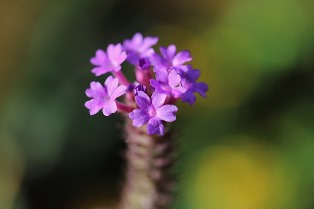
- A genus of annual and perennial herbaceous or semi-woody flowering plants.
- Popular for their clusters of small, colorful flowers.
- Often used in gardens for ground cover and borders.
Viburnum

- A genus of deciduous or evergreen shrubs.
- Notable for their attractive foliage, flowers, and fruit.
- Used in landscaping for hedges and ornamental planting.
Vanda Orchid

- A genus in the orchid family, known for its stunning and fragrant flowers.
- Requires specific growing conditions, including high humidity and bright light.
- Popular in tropical and subtropical gardens.
Valerian

- A perennial flowering plant known for its medicinal properties.
- Produces clusters of sweetly scented pink or white flowers.
- Used historically as a remedy for insomnia and anxiety.
Veronica

- A genus of flowering plants, commonly known as speedwell.
- Known for their small, attractive blue or white flowers.
- Often found in meadows and garden borders.
Vinca (Periwinkle)

- A genus of flowering plants, known for their glossy leaves and star-like flowers.
- Commonly used as ground cover in gardens.
- Notable for their ability to thrive in various conditions.
Velvetleaf

- A flowering plant in the mallow family, known for its soft, velvety leaves.
- Produces yellow-orange flowers.
- Often considered a weed in agricultural settings.
Vanilla Orchid
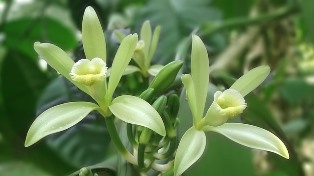
- A genus of flowering plants in the orchid family, including the species used to produce vanilla flavoring.
- Known for their long, green vines and fragrant flowers.
- Grown primarily in tropical regions.
Viola tricolor (Wild Pansy)
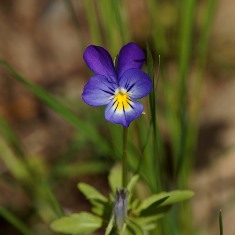
- A species of flowering plant in the violet family.
- Notable for its tri-colored flowers in purple, yellow, and white.
- Often found in meadows and gardens.
Verbascum (Mullein)

- A genus of over 250 species of flowering plants.
- Known for their tall spikes of densely packed flowers.
- Used in traditional medicine and as ornamental plants.
Vitex (Chaste Tree)

- A genus of flowering plants in the verbena family.
- Known for their aromatic leaves and spikes of lavender flowers.
- Used in herbal medicine and as ornamental shrubs.
Venus Slipper

- A common name for various species of slipper orchids.
- Known for their distinctive slipper-shaped pouches.
- Popular in horticulture for their unique appearance.
Vicia (Vetch)

- A genus of flowering plants in the legume family.
- Known for their climbing habit and small, pea-like flowers.
- Often used as cover crops or forage plants.
Veldt Daisy

- A common name for various species of daisy-like flowering plants.
- Known for their bright, cheerful flowers.
- Often found in sunny, open habitats.
Violet
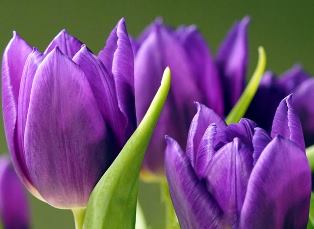
- A genus of flowering plants in the family Violaceae.
- Known for their heart-shaped leaves and delicate purple flowers.
- Commonly found in woodlands and gardens.
Veronica Spicata (Spike Speedwell)

- A species of flowering plant known for its tall spikes of blue flowers.
- Popular in gardens for their long-lasting blooms.
- Attracts pollinators like bees and butterflies.
Verbena bonariensis

- A species of flowering plant known for its tall, airy stems topped with clusters of tiny purple flowers.
- Popular in gardens for adding height and texture.
- Attracts butterflies and other pollinators.
Vanda coerulea (Blue Vanda)

- A species of orchid known for its striking blue flowers.
- Requires specific growing conditions, including high humidity and bright light.
- Highly prized in orchid collections.
Viburnum opulus (Guelder Rose)
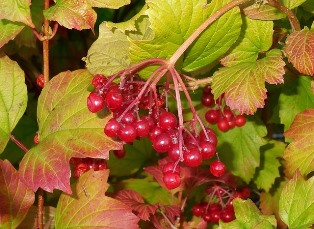
- A deciduous shrub known for its large clusters of white flowers and red berries.
- Often used in landscaping for hedges and ornamental planting.
- Attracts birds and other wildlife.
Verbena hastata (Swamp Verbena)

- A species of flowering plant known for its tall spikes of purple flowers.
- Commonly found in wet meadows and along stream banks.
- Attracts butterflies and other pollinators.
Viscaria
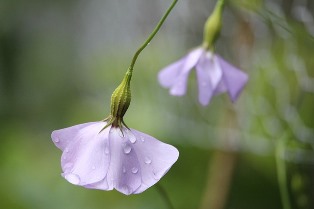
- A genus of flowering plants known for their showy, colorful flowers.
- Often found in alpine and rocky habitats.
- Popular in rock gardens and as ornamental plants.
Veronica longifolia (Longleaf Speedwell)

- A species of flowering plant known for its tall spikes of blue flowers.
- Popular in gardens for their long-lasting blooms.
- Attracts pollinators like bees and butterflies.
Verbena rigida
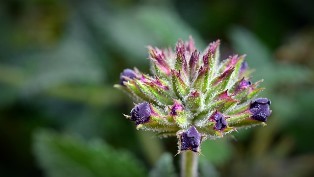
- A species of flowering plant known for its bright purple flowers.
- Often used as ground cover in gardens.
- Drought-tolerant and easy to grow.
Vriesea
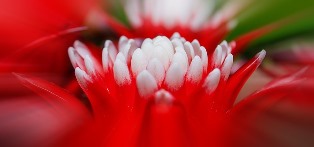
- A genus of flowering plants in the bromeliad family.
- Known for their striking, colorful bracts and foliage.
- Popular as houseplants and in tropical gardens.
Venus Flytrap (flower)
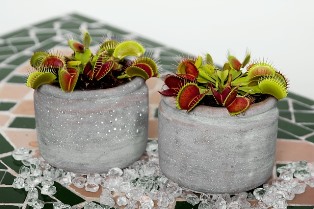
- A carnivorous plant known for its trap-like leaves.
- Produces small, white flowers.
- Native to subtropical wetlands in the United States.
Veronica gentianoides

- A species of flowering plant known for its pale blue flowers.
- Often found in rock gardens and alpine habitats.
- Attractive to pollinators.
Verbena bipinnatifida (Fern-leaved Verbena)

- A species of flowering plant known for its fern-like leaves and purple flowers.
- Commonly found in prairies and open woodlands.
- Attracts butterflies and other pollinators.
Valeriana officinalis

- A perennial flowering plant known for its sweetly scented pink or white flowers.
- Used historically as a remedy for insomnia and anxiety.
- Attracts pollinators like bees and butterflies.
Viscum (Mistletoe)

- A genus of parasitic plants known for their association with Christmas traditions.
- Produces small, white berries.
- Grows on the branches of trees and shrubs.
Verbena canadensis

- A species of flowering plant known for its clusters of pink or purple flowers.
- Often used as ground cover in gardens.
- Drought-tolerant and easy to grow.
Vanilla planifolia
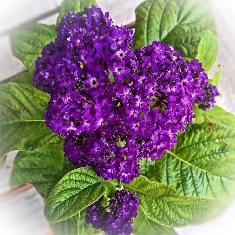
- A species of orchid known for producing vanilla flavoring.
- Grows as a vine with greenish-yellow flowers.
- Cultivated primarily in tropical regions.
Viola odorata (Sweet Violet)
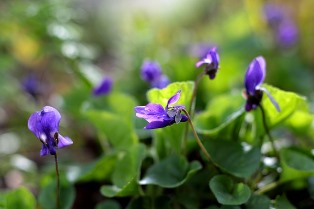
- A species of flowering plant known for its fragrant purple flowers.
- Often found in woodlands and gardens.
- Used in perfumes and flavorings.
Veronica persica (Bird’s Eye)

- A species of flowering plant known for its small, bright blue flowers.
- Often found in lawns and meadows.
- Attracts pollinators like bees and butterflies.
Verbena peruviana
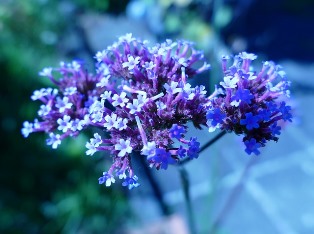
- A species of flowering plant known for its clusters of bright red flowers.
- Often used as ground cover in gardens.
- Drought-tolerant and easy to grow.
Viola cornuta (Horned Violet)
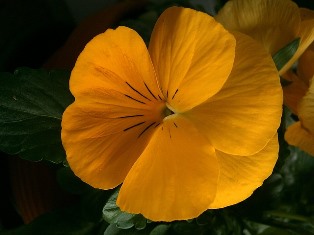
- A species of flowering plant known for its distinctive horn-like spur.
- Produces flowers in various colors, including purple, yellow, and white.
- Popular in gardens and containers.
Valerianella (Corn Salad)
- A genus of flowering plants in the honeysuckle family.
- Known for their small, delicate flowers and edible leaves.
- Often used in salads and as a spring green.
Veronica arvensis (Wall Speedwell)

- A species of flowering plant known for its small, blue flowers.
- Often found in disturbed habitats, such as roadsides and fields.
- Attracts pollinators like bees and butterflies.
Viburnum dentatum

- A deciduous shrub known for its clusters of white flowers and blue-black berries.
- Often used in landscaping for hedges and ornamental planting.
- Attracts birds and other wildlife.
Verbena simplex

- A species of flowering plant known for its small, purple flowers.
- Often found in prairies and open woodlands.
- Attracts butterflies and other pollinators.
Veronica teucrium
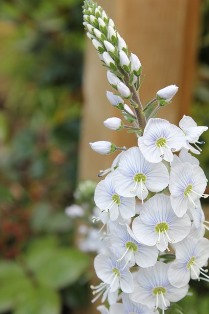
- A species of flowering plant known for its bright blue flowers.
- Often found in rocky and alpine habitats.
- Attractive to pollinators.
Verbena tenuisecta (Moss Verbena)
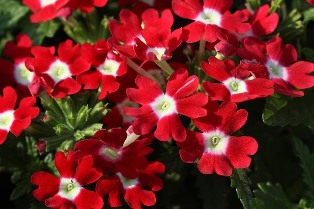
- A species of flowering plant known for its delicate, fern-like leaves and purple flowers.
- Often used as ground cover in gardens.
- Drought-tolerant and easy to grow.
Viola lutea (Mountain Pansy)

- A species of flowering plant known for its bright yellow flowers.
- Often found in alpine and rocky habitats.
- Attractive to pollinators.
Verbena hybrids
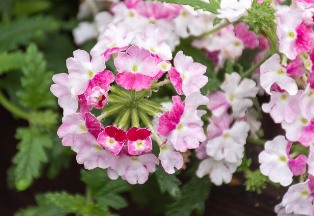
- Various hybrids of the Verbena genus, known for their colorful and vibrant flowers.
- Popular in gardens for their long-lasting blooms.
- Attracts butterflies and other pollinators.
Viburnum tinus (Laurustinus)
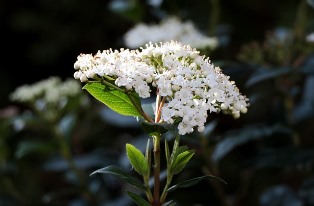
- An evergreen shrub known for its clusters of white or pink flowers and blue-black berries.
- Often used in landscaping for hedges and ornamental planting.
- Attracts birds and other wildlife.
Veronica hederifolia (Ivy-leaved Speedwell)

- A species of flowering plant known for its ivy-like leaves and small blue flowers.
- Often found in disturbed habitats, such as roadsides and fields.
- Attracts pollinators like bees and butterflies.
Viola arvensis (Field Pansy)

- A species of flowering plant known for its small, delicate flowers in shades of yellow and white.
- Often found in fields and meadows.
- Attractive to pollinators.
Verbena x hybrida
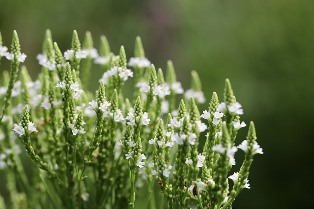
- A hybrid species of Verbena, known for its vibrant and diverse flower colors.
- Popular in gardens for their long-lasting blooms.
- Attracts butterflies and other pollinators.
Veronica montana (Wood Speedwell)

- A species of flowering plant known for its small, blue flowers.
- Often found in woodlands and shady areas.
- Attracts pollinators like bees and butterflies.
Viola sororia (Common Blue Violet)

- A species of flowering plant known for its heart-shaped leaves and blue-purple flowers.
- Often found in lawns and meadows.
- Attracts pollinators like bees and butterflies.
Verbena macdougalii

- A species of flowering plant known for its tall spikes of purple flowers.
- Often found in prairies and open woodlands.
- Attracts butterflies and other pollinators.
Viola pedata (Birdfoot Violet)

- A species of flowering plant known for its distinctive bird-foot shaped leaves and bright flowers.
- Often found in sandy or rocky soils.
- Attractive to pollinators.
Veronica filiformis (Slender Speedwell)
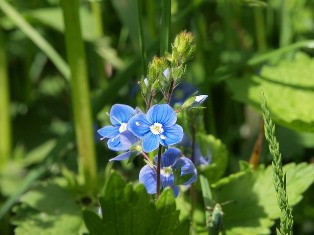
- A species of flowering plant known for its small, blue flowers.
- Often found in lawns and meadows.
- Attracts pollinators like bees and butterflies.
Viola pubescens (Downy Yellow Violet)

- A species of flowering plant known for its bright yellow flowers and fuzzy leaves.
- Often found in woodlands and shaded areas.
- Attractive to pollinators.
Veronica alpina (Alpine Speedwell)
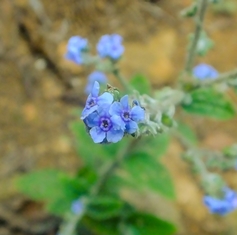
- A species of flowering plant known for its small, blue flowers.
- Often found in alpine and rocky habitats.
- Attractive to pollinators.
Viola x wittrockiana (Garden Pansy)
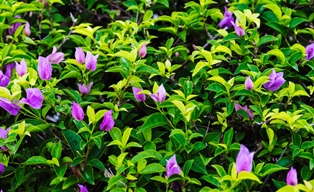
- A hybrid species of Viola, known for its large, colorful flowers.
- Popular in gardens and containers for their vibrant blooms.
- Attracts pollinators like bees and butterflies.
Verbena urticifolia (White Vervain)
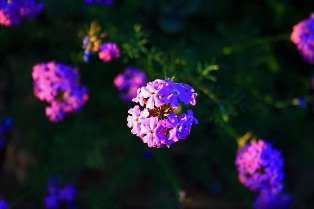
- A species of flowering plant known for its tall spikes of white flowers.
- Often found in wet meadows and along stream banks.
- Attracts butterflies and other pollinators.
Veronica officinalis (Heath Speedwell)

- A species of flowering plant known for its small, blue flowers.
- Often found in meadows and heathlands.
- Attracts pollinators like bees and butterflies.
Viola betonicifolia

- A species of flowering plant known for its delicate, purple flowers.
- Often found in woodlands and shady areas.
- Attractive to pollinators.
Verbena hastata (Blue Vervain)

- A species of flowering plant known for its tall spikes of blue flowers.
- Often found in wet meadows and along stream banks.
- Attracts butterflies and other pollinators.
Viola tricolor (Heartsease)
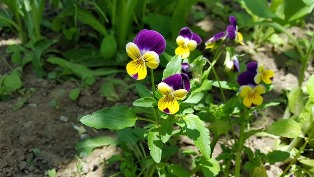
- A species of flowering plant known for its tri-colored flowers in purple, yellow, and white.
- Often found in meadows and gardens.
- Attractive to pollinators.
Veronica serpyllifolia (Thyme-leaved Speedwell)

- A species of flowering plant known for its small, blue flowers.
- Often found in meadows and lawns.
- Attracts pollinators like bees and butterflies.
Viola cucullata (Marsh Blue Violet)

- A species of flowering plant known for its bright blue flowers.
- Often found in wet meadows and along stream banks.
- Attractive to pollinators.
Veronica spicata (Royal Candles)

- A species of flowering plant known for its tall spikes of blue flowers.
- Popular in gardens for their long-lasting blooms.
- Attracts pollinators like bees and butterflies.
Verbena stricta (Hoary Vervain)
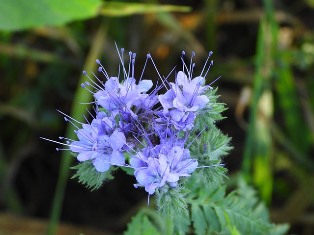
- A species of flowering plant known for its tall spikes of purple flowers.
- Often found in prairies and open woodlands.
- Attracts butterflies and other pollinators.
Viola labradorica (Alpine Violet)
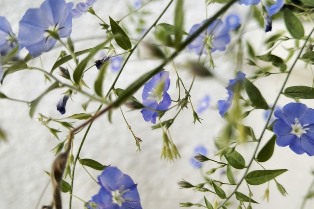
- A species of flowering plant known for its small, purple flowers.
- Often found in alpine and rocky habitats.
- Attractive to pollinators.
Veronica peregrina (Purslane Speedwell)
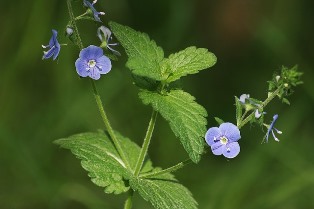
- A species of flowering plant known for its small, white flowers.
- Often found in disturbed habitats, such as roadsides and fields.
- Attracts pollinators like bees and butterflies.
Viola palmata (Wood Violet)

- A species of flowering plant known for its palmately lobed leaves and purple flowers.
- Often found in woodlands and shady areas.
- Attractive to pollinators.
Verbena aubletia
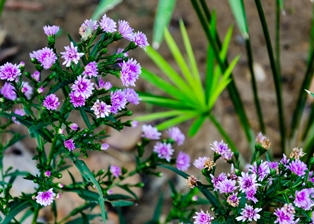
- A species of flowering plant known for its bright pink or purple flowers.
- Often used as ground cover in gardens.
- Drought-tolerant and easy to grow.
Verbena officinalis (Common Vervain)

- A species of flowering plant known for its small, purple flowers.
- Used historically in herbal medicine.
- Attracts butterflies and other pollinators.
Veronica urticifolia (Nettle-leaved Speedwell)
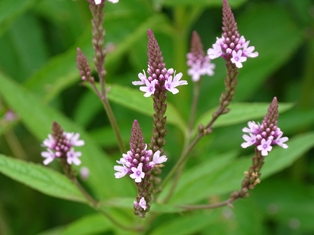
- A species of flowering plant known for its small, blue flowers.
- Often found in disturbed habitats, such as roadsides and fields.
- Attracts pollinators like bees and butterflies.
Verbena bonariensis (Purpletop Vervain)

- A species of flowering plant known for its tall, airy stems topped with clusters of tiny purple flowers.
- Popular in gardens for adding height and texture.
- Attracts butterflies and other pollinators.
Viola reichenbachiana (Early Dog Violet)

- A species of flowering plant known for its small, blue-purple flowers.
- Often found in woodlands and shady areas.
- Attractive to pollinators.
Veronica beccabunga (Brooklime)
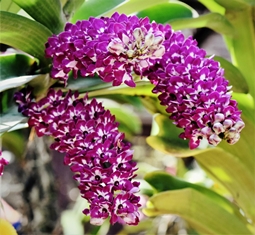
- A species of flowering plant known for its small, blue flowers.
- Often found in wet habitats, such as along stream banks.
- Attracts pollinators like bees and butterflies.
Verbena brasiliensis (Brazilian Vervain)
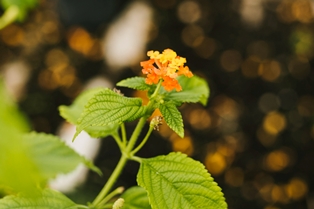
- A species of flowering plant known for its tall stems and clusters of tiny purple flowers.
- Often found in disturbed habitats and gardens.
- Attracts butterflies and other pollinators.
Viola pyrenaica (Pyrenean Violet)
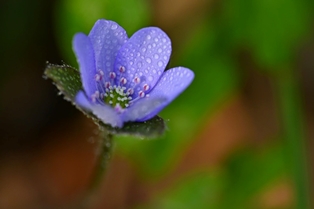
- A species of flowering plant known for its bright purple flowers.
- Often found in alpine and rocky habitats.
- Attractive to pollinators.
Veronica chamaedrys (Germander Speedwell)

- A species of flowering plant known for its small, bright blue flowers.
- Often found in meadows and woodlands.
- Attracts pollinators like bees and butterflies.
Viola hederacea (Ivyleaf Violet)
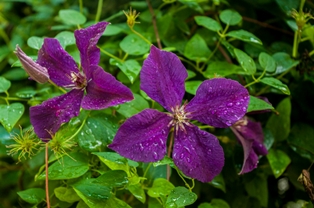
- A species of flowering plant known for its small, white and purple flowers.
- Often found in shaded areas and woodlands.
- Attractive to pollinators.
Verbena glandularifolia
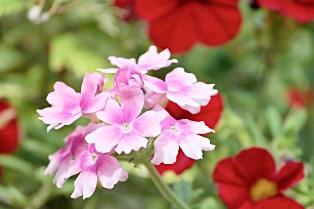
- A species of flowering plant known for its small, purple flowers.
- Often found in prairies and open woodlands.
- Attracts butterflies and other pollinators.
Veronica agrestis (Green Field Speedwell)
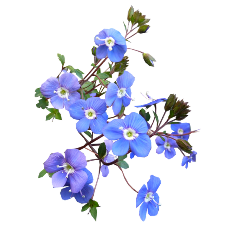
- A species of flowering plant known for its small, blue flowers.
- Often found in fields and disturbed habitats.
- Attracts pollinators like bees and butterflies.
Viola blanda (Sweet White Violet)

- A species of flowering plant known for its fragrant, white flowers.
- Often found in woodlands and shady areas.
- Attractive to pollinators.
Verbena orcuttiana
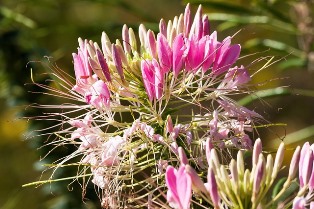
- A species of flowering plant known for its small, purple flowers.
- Often found in disturbed habitats.
- Attracts butterflies and other pollinators.
Veronica triphyllos (Finger Speedwell)
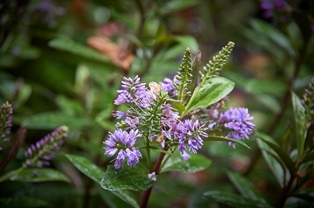
- A species of flowering plant known for its small, blue flowers.
- Often found in meadows and lawns.
- Attracts pollinators like bees and butterflies.
Viola epipsila

- A species of flowering plant known for its small, purple flowers.
- Often found in wet meadows and along stream banks.
- Attractive to pollinators.
Verbena lasiostachys (Western Vervain)

- A species of flowering plant known for its small, purple flowers.
- Often found in prairies and open woodlands.
- Attracts butterflies and other pollinators.
Veronica polita (Grey Field Speedwell)

- A species of flowering plant known for its small, blue flowers.
- Often found in fields and disturbed habitats.
- Attracts pollinators like bees and butterflies.
Viola jooi

- A species of flowering plant known for its small, purple flowers.
- Often found in alpine and rocky habitats.
- Attractive to pollinators.
Verbena carnea
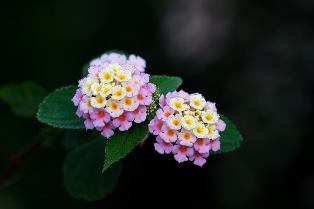
- A species of flowering plant known for its clusters of pink flowers.
- Often used as ground cover in gardens.
- Drought-tolerant and easy to grow.
Veronica polifolia

- A species of flowering plant known for its small, blue flowers.
- Often found in rocky and alpine habitats.
- Attractive to pollinators.
Viola kornuta
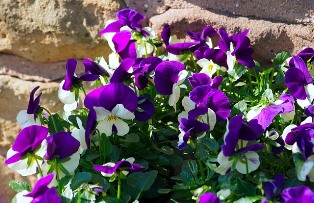
- A species of flowering plant known for its small, purple flowers.
- Often found in alpine and rocky habitats.
- Attractive to pollinators.
Verbena bonariensis (Tall Vervain)
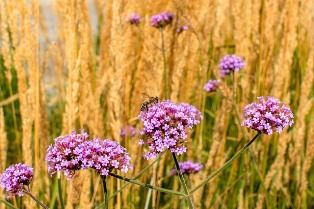
- A species of flowering plant known for its tall, airy stems topped with clusters of tiny purple flowers.
- Popular in gardens for adding height and texture.
- Attracts butterflies and other pollinators.
Veronica scheereri
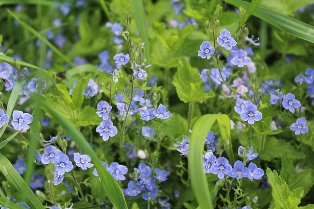
- A species of flowering plant known for its small, blue flowers.
- Often found in meadows and woodlands.
- Attracts pollinators like bees and butterflies.
Viola delphinantha

- A species of flowering plant known for its small, purple flowers.
- Often found in alpine and rocky habitats.
- Attractive to pollinators.
Verbena menthifolia (Mint Vervain)

- A species of flowering plant known for its mint-scented leaves and purple flowers.
- Often found in prairies and open woodlands.
- Attracts butterflies and other pollinators.

